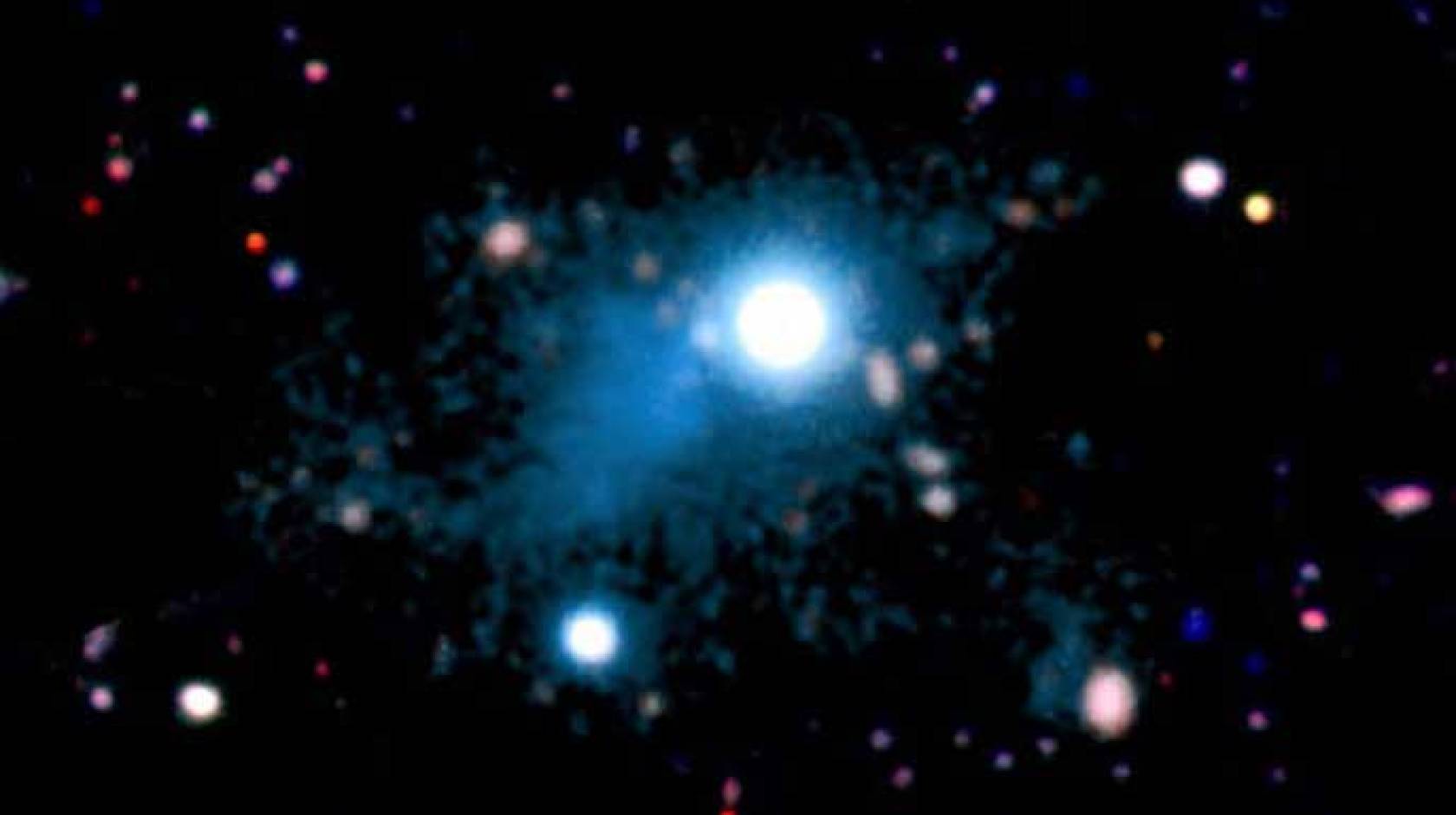Tim Stephens , UC Santa Cruz

UC Santa Cruz astronomers who captured the first image of a filament of the "cosmic web" thought to connect galaxies throughout the universe have been recognized by the editors of Physics World for one of the "top 10 breakthroughs" of 2014.
The team led by UC Santa Cruz astronomers Sebastiano Cantalupo (now at ETH Zurich), J. Xavier Prochaska, and Piero Madau detected the glowing gas of the filament due to its illumination by the intense radiation given off by a distant quasar. Using the Keck I Telescope in Hawaii, they observed a very large, luminous nebula of gas extending about 2 million light-years across intergalactic space, which they nicknamed the 'Slug Nebula' in honor of UCSC's banana slug mascot.
This is the second time that Prochaska's research group has been recognized by Physics World for a top 10 breakthrough. In 2011, his team's discovery of pristine clouds of gas formed shortly after the Big Bang was also featured as one of nine runners-up to the "Breakthrough of the Year" in Science magazine in addition to making the Physics World top 10.
"It may never happen again, so I'm especially amazed to get this acknowledgement a second time," said Prochaska, a professor of astronomy and astrophysics at UCSC.
Prochaska noted that a new instrument is being built for Keck that will greatly facilitate future research on the cosmic web. The Keck Cosmic Web Imager (KCWI) will be able to perform "spectral imaging," capturing both an image and a spectrum of an object simultaneously. The UC Observatories instrument labs at UC Santa Cruz are currently working on the camera for KCWI.
Physics World is an international monthly magazine published by the Institute of Physics. In addition to Cantalupo, Prochaska, and Madau, the coauthors of the cosmic web paper included Fabrizio Arrigoni-Battaia and Joseph Hennawi of the Max Planck Institute for Astronomy in Heidelberg.

